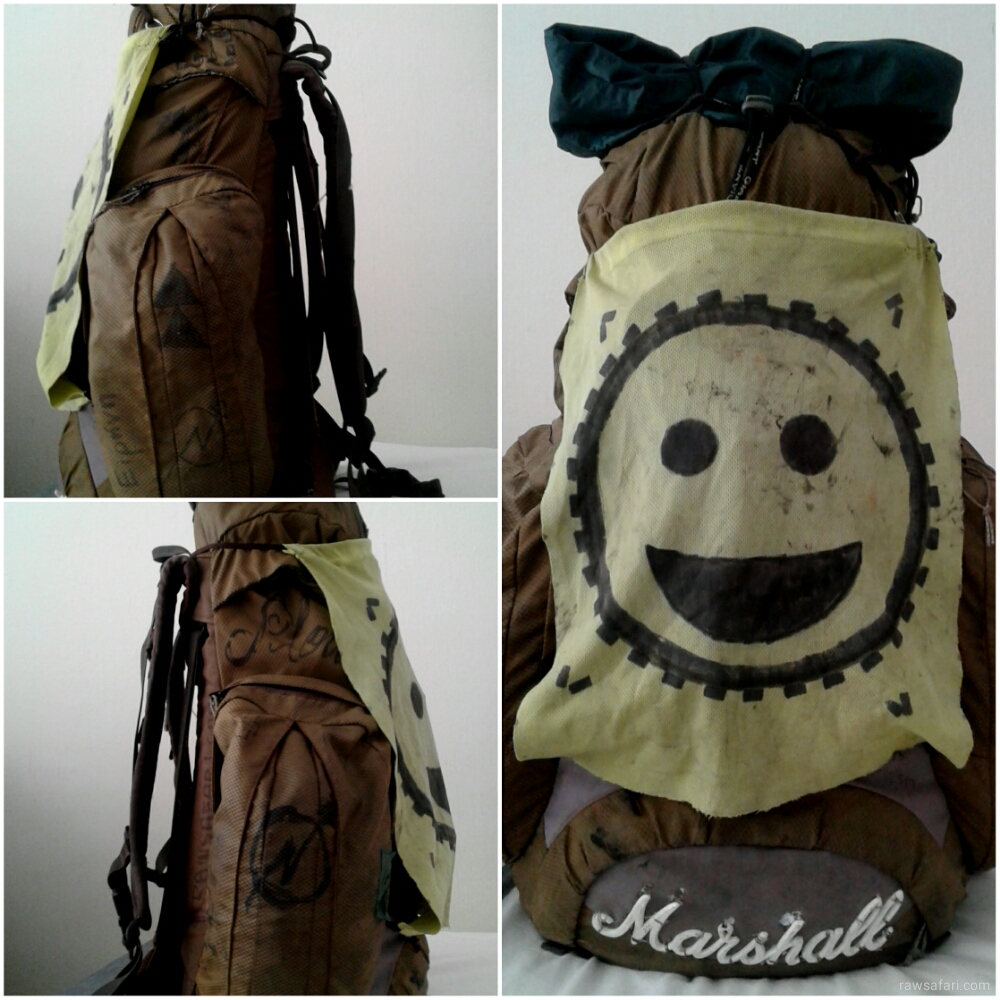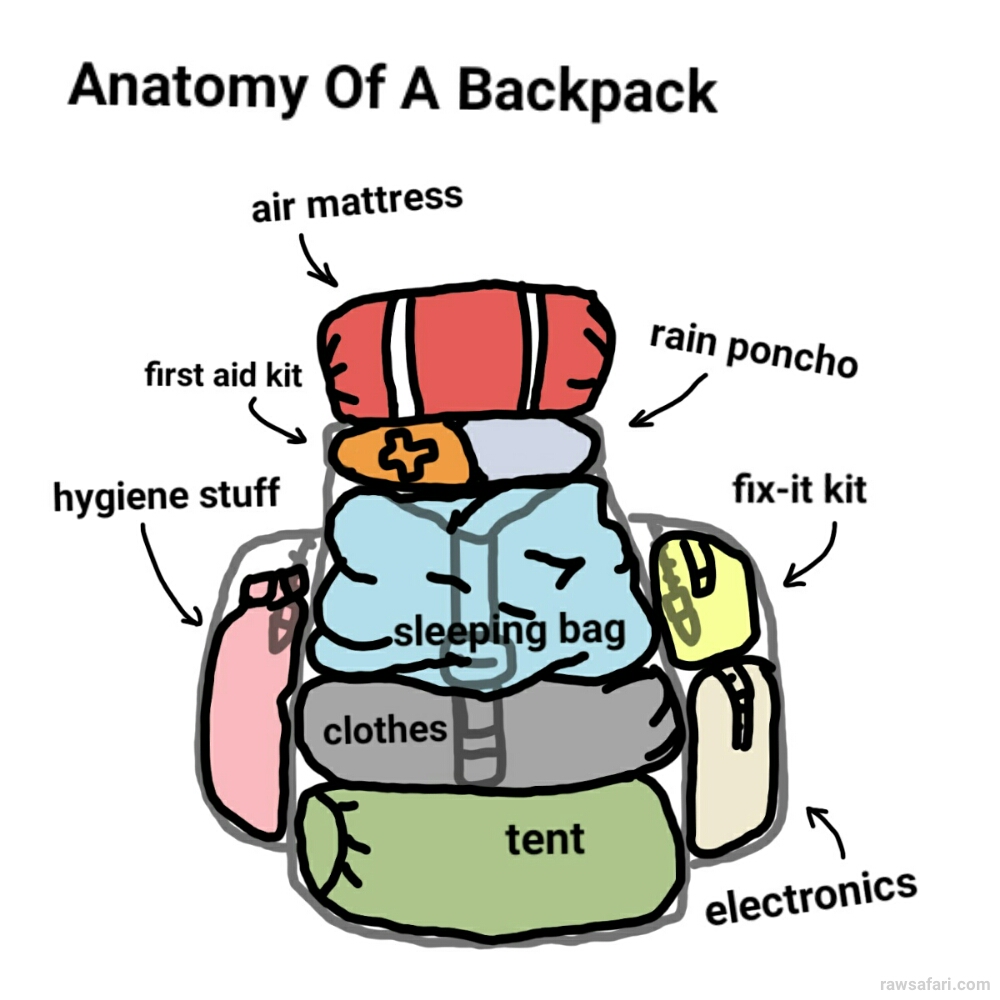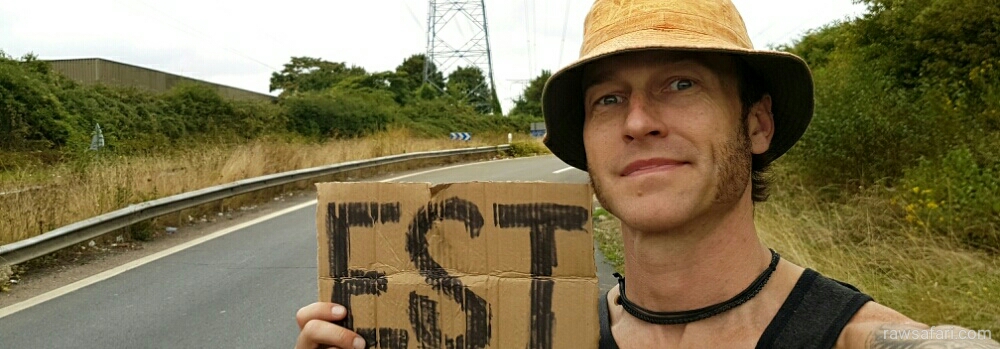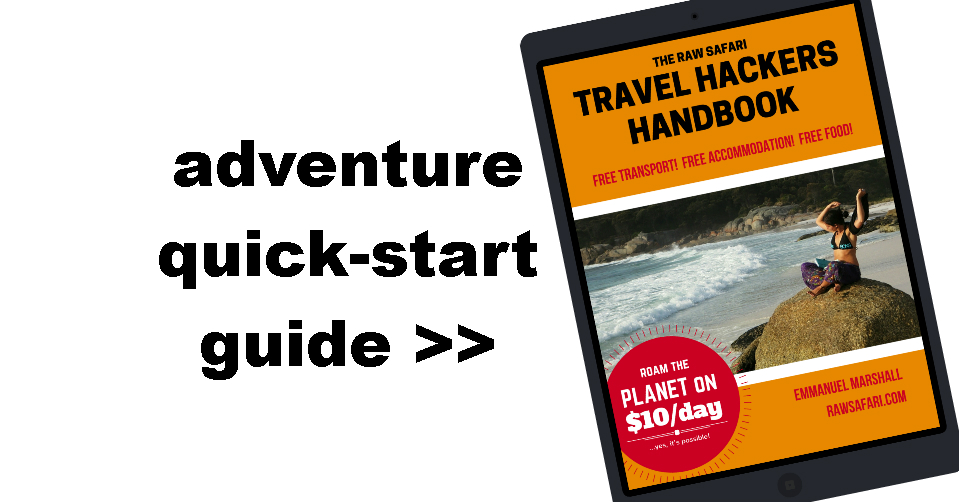Over the years, I’ve experimented with all kinds of different ways to pack my bag.
The key to getting everything in easily, and quickly, is to have a place for everything worked out, and have your stuff organised the right way.
(Top photo: my backpack has hitchhiked with me through 25+ countries now. I don’t keep it clean, but I do keep it light.)
Here are 6 easy tips to help you get your backpack light and organised:
1. Choose The Right Backpack.
If you want to travel light and easy, you need to start with the right gear, and the right sort of bag.
Get the lightest, most compact equipment you can afford. Good gear is easier to use, lasts longer, and won’t weigh you down
When you choose a backpack, consider these 3 key criteria:
> size (volume in litres)
> weight
> fastening method
You want a backpack that is no bigger than 40 litres. Mine is 30, and it is plenty big enough.
Obviously, you want your bag to be strongly constructed, but you also want it to be as light as possible.
Choose a bag with a drawstring closure, not a zipper. Bags with zippers are much harder to pack, and the zippers often break.
2. Bundle.
Within my backpack, my stuff is bundled into smaller bags. This is good in two ways. It makes it easier to find what I want, and it makes it easier to pack and unpack quickly. I use plastic bags for some things, because they are waterproof, and most backpacks leak a bit as they get older. For other things I use simple cloth or nylon sacks with drawstrings. Pillow cases are good if you want a cheap, easy option.
Don’t pack your bundles too tightly. You want them to be floppy, so they will squeeze into your backpack, and fill in all the little corners and crevices. There are lots of gear bags in camping shops that have straps to crush all the air out of them. They seem like a good idea, but when the bag is tightly compressed, it takes on a rigid, cylindrical shape, and that means lots of wasted space when you put them in your backpack.
Once you put the bundles in your backpack, then you crush everything together. Much more efficient.
3. Stuff It.
The way you put stuff in your bag is so important.
First to go in is the stuff you want at the bottom. I start with my tent, because it is my heaviest bit of gear. You really want the heavy stuff to be at the bottom, to keep your centre of gravity low, and make carrying your bag as easy as possible.
My tent is split up into four bundles. The tent itself, and the fly are in separate bundles, to make them easier to handle and crush. The poles are in a long skinny bag, and that goes down the length of the backpack nearest to my spine. The pegs are in a little bag of their own, and they go in one of the side pockets, with my fix-it kit.
After my tent, the next thing to go in is a cloth sack with all my clothes in it (this doubles as a pillow at night).
Now my tent, and my clothes are in the bottom half of my backpack, I crush them down with as much force as I can, to squeeze all the air out of them, and compact them into a small space.
My sleeping bag goes in next. The sleeping bag is inside a big plastic bin liner bag, to make sure it stays dry. I don’t roll my sleeping bag. I feed the foot of the bag into the bin liner, and then into the mouth of the backpack. Then I squash the sleeping bag into the backpack, bit by bit. I don’t compress the sleeping bag any more than I need to, because it is filled with feathers, and they don’t like to be crushed too much. The trick is to crush the tent and clothing, so there is lots of space for the sleeping bag to stay relatively floppy.
Lastly, odds and ends like my sarong, and swimming shorts go on top, and then I pull the drawstring tight, and strap down the lid of the backpack.
4. Fill Your Pockets.
My backpack has two side pockets and a pocket in the lid as well. In these pockets I keep things that I don’t want to crush, like electronics, my fix-it kit, and my hygiene bag, which contains sunscreen, toothpaste and stuff. Side pockets are also a good place to keep things you need to put your hands on quickly, like a rain poncho, and a first aid kit.
Right on the top of most backpacks, there is a couple of straps that allow you to tie some gear on. It’s like a backpack-roofrack. I put my hiking mattress up there. It’s very light, but quite bulky, so I don’t want to waste space with it inside the bag. It’s waterproof nylon, so it doesn’t matter if it gets rained on.
5. Make Like A Kangaroo.
As well as a backpack, I have a go-bag. When I’m camped somewhere for a while, I use the go-bag for day to day stuff like shopping, sightseeing and going to work. When I’m on the road, I wear the go-bag on the front of my body. In it, I carry my water, my food, and stuff I need to get at easily. It’s good to wear the go-bag on your chest, because it’s easy to reach, and it also helps to balance the weight of your backpack, so you aren’t walking around bent over all the time. Much more comfortable.
6. Keep It Small.
Less stuff means less weight to carry, and that makes for happy travel. When you choose the items that go in your backpack, remember that every bit of weight counts. A bag weighing more than 10 or 12 kg is too heavy for low-budget travel. It might feel OK when you first pick it up, but it will feel a lot different when you are trudging through the streets of an unfamiliar city, late at night, looking for a place to sleep.
More?
If you would like to know more about the gear I use, check out the “Pack Your Bag” page.
There are also lots of other posts on Raw Safari about equipment, and how to use it. Click here to read up on it.
If you have a question, I’ll be happy to help. Check out the “Q and A” page, or email me: rawsafarimail@gmail.com
Happy Trails!
Hi! Manny here, the guy who makes this blog.
Want to start an adventure of your own?
Download your FREE copy of my e-book: The Raw Safari Travel Hackers Handbook and learn how to see the world on $10 a day!
Everything I’ve ever learned about low-budget adventure is in this book. Get it now, for free: click here!
>> Connect with Raw Safari on Facebook.






